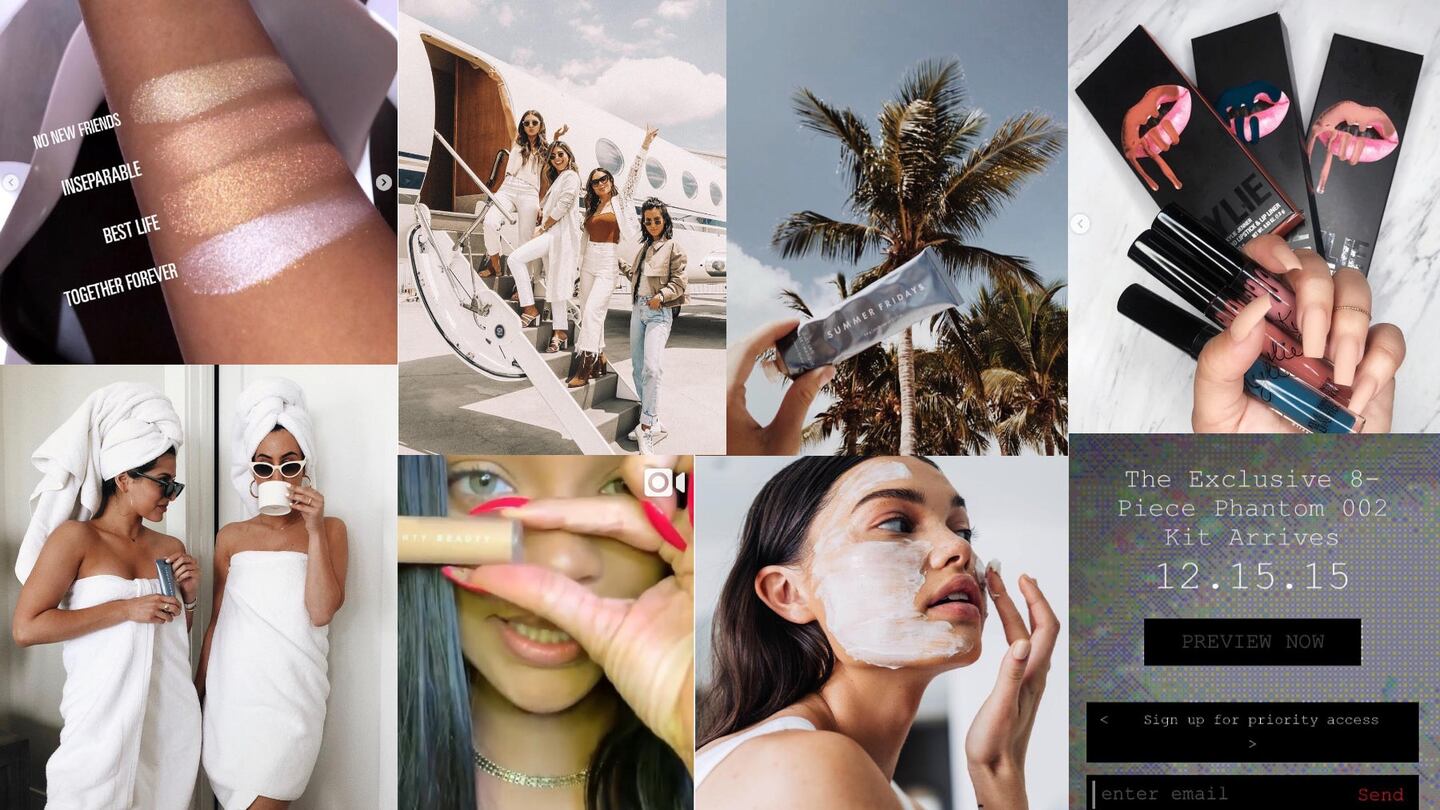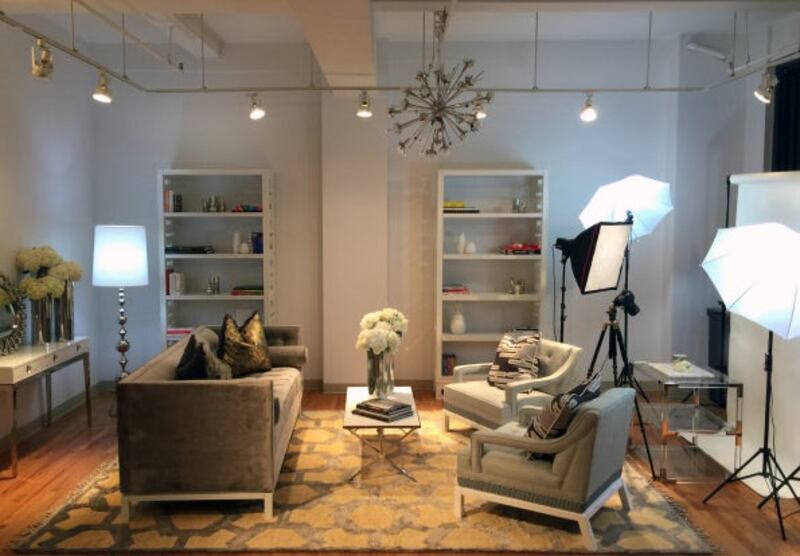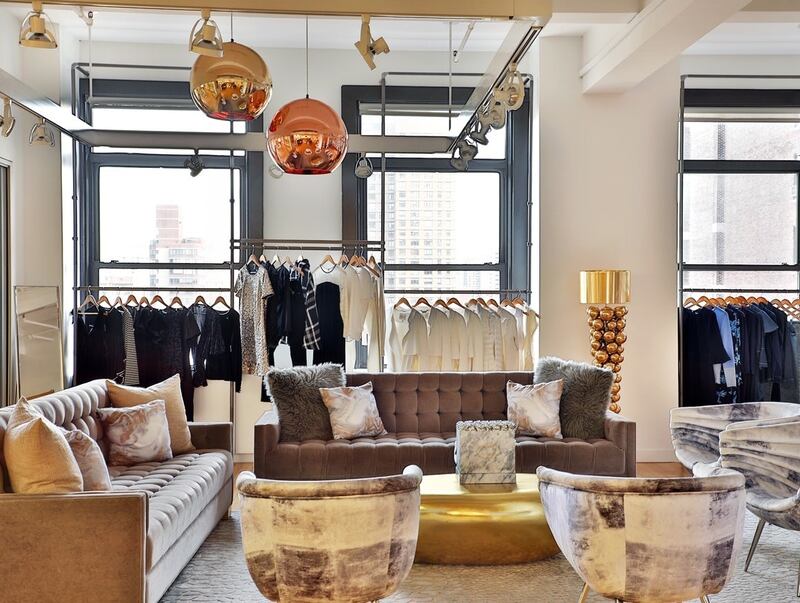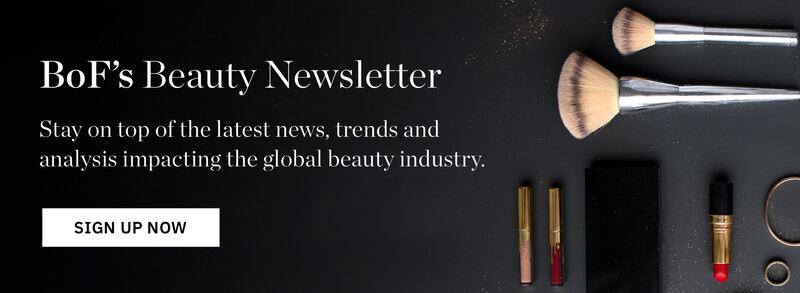
The Business of Fashion
Agenda-setting intelligence, analysis and advice for the global fashion community.

Agenda-setting intelligence, analysis and advice for the global fashion community.

NEW YORK, United States — A new age requires new rules. It also benefits from old insights. Leading beauty publicists — from the veterans to the new guard — weigh in on what works for business today.
1. PR Is No Longer Just PR
Brands used to call in public relations agencies to pitch PR business, branding agencies to pitch branding business. Today, every agency is expected to do a little bit of everything. “If a brand has a new product to launch, they will call in PR, marketing, branding and advertising agencies; they will listen to every idea, and it is the best idea that wins,” says beauty PR veteran Alison Brod. “If you understand marketing, there’s so much more business out there now.”
"If you call it PR, you sound old-fashioned or antiquated," says Jacquie Tractenberg, who founded her firm, Tractenberg & Co, in 1999 with just one client, John Frieda. "Today, everybody calls it something different — it's integrated marketing; it's 360-degree-marketing. When everything started to shift, we came together as an agency very quickly and said, 'This entire business is changing. We have to change, too.'"
ADVERTISEMENT
Firms like Tractenberg’s now analyse data, study ROI and other marketing metrics and have added stand-alone divisions to handle social media, influencer relations and events. Tractenberg’s offices even feature a photo studio, built specifically for influencers.
Brod — whose brand portfolio has expanded in recent years to include everything from Reese Witherspoon’s Draper James apparel line to Burger King and Jell-O — has a tiny beauty salon in-house. “It’s set up for Garnier today; it could be for L’Oréal Paris or Glamsquad tomorrow, Urban Decay the next day,” she says, swishing past the white subway-tiled space tucked in a corner of her Park Avenue South offices. “We have influencer and editor appointments here now instead of taking them to lunch. We want them to interact with us in our world and see our brands.”
Brod changed her agency’s name from Alison Brod Public Relations to Alison Brod Marketing and Communications two years ago to register the shift in the business landscape. “We’ve evolved from PR to marketing,” she explains. Her teams now do everything from weighing in on packaging design and re-branding initiatives to helping clients “get outside their head” to understand what drives consumer behavior. “Everything has to be tied to an insight. The buzzword is agenda-setting — what’s our agenda-setting initiative?” says Brod. “Today, every brand wants to be tied to something bigger than just, ‘here’s a product that’s going to make me look pretty.’ That’s very different than how we used to operate.”
Kelly Fobar Davis repositioned her business this past summer, renaming her namesake six-year-old firm Foundation and restructuring to create a hybrid shop for the social media marketing age. Her “two-pronged approach” includes a communications arm which oversees product PR for clients like Christen Dominique — a cosmetics entrepreneur and vlogger with over four million YouTube subscribers — and a talent management arm, spearheaded by partner Jane Lim (formerly of Thakoon and Next Management), which handles Dominique’s career and endorsement work.

Influencers at the Tractenberg Studio | Source: Courtesy
"I wanted a solid understanding of how the influencer world worked on the back-end," says Davis, who credits client Michelle Phan, the Ipsy founder and YouTube pioneer, with encouraging her to pivot her business. "It's one thing to make recommendations to our clients about who they should be partnering with, but I also wanted to think like an agent. I wanted to understand the negotiations and contractual execution, and to know how to get the most for our brands." While Foundation also works with influencers outside of the agency for clients like Urban Decay (for whom they manage paid social strategies), "of course we want our brands working with our talent," says Davis, though she says her team is careful to "only make those recommendations as they make sense."
2. Create a Lane For Your Clients & For Yourself
Within a crowded category, in order to differentiate oneself from competitors, a brand must very deliberately create its own lane, says Poke PR founder Emily Parr.
ADVERTISEMENT
“Brands that have their own stories are disruptive,” explains Parr. She uses former client Drunk Elephant as a prime example: When it launched in 2013, the company created a niche, and a name, for itself within the clean beauty space — which until that time was synonymous mainly with “natural” — by introducing the idea that performance-driven synthetic ingredients, mixed with naturals, could also be a nontoxic solution.
“It was one of the few brands not trying to be a Tata [Harper],” says Parr. “It was a different philosophy. [Founder Tiffany Masterson] became the gold standard of what’s safe.” Then, she says, “Beautycounter launched, with the idea that the world doesn’t need another beauty brand, the world needs a movement. In a crowded space, [founder Gregg Renfrew] created her own lane. Advocacy was going to be a monumental part of the brand and the mission.”
While helping to brand her brands, Parr ended up branding her agency and herself as well. “It became clear that if my job is to create a strategy for these brands, I have to have a strategy for myself. I wanted to rep clean brands that had strong female founders,” says Parr, whose portfolio today includes Briogeo, Beautycounter, Summer Fridays, BeautyBio and Ilia, among others. “It was important to have a consistent strategy,” she says. “Now I have brands coming to me saying, ‘I want to work with you because of it.’”
3. Print Matters… To Some
“I still feel most proud when I get a print story, but it’s rare that anything is going to be seen first in a magazine anymore,” admits an executive at one of LVMH’s beauty brands.
“If you’re in a magazine, it’s still an image-builder,’ confirms Tractenberg, “but it has to be in conjunction with everything else. Everyone now is focusing on online engagement and what moves the needle in sales, which is ultimately the barometer of what is successful. And instead of ad value, it’s earned media value [EMV]: What did this post get for us?”
While PR firms used to measure much of their success by the number of in-book product credits or the length of a feature, they now have far more granular data, like that from Tribe Dynamics, the research firm many brands hire to record and analyse EMV. “No one understands their formula, but we all measure our success by it,” the LVMH executive says.
For Parr, print is far from her priority for other reasons, too. “I personally care less about print because it’s such a headache,” she says. The unreliable aspect of securing a placement (and possibly getting cut at the last minute) is not always worth the effort, she says, and the longer lead times often prove challenging. “They want products right now that aren’t going to launch for six months. We’re getting samples 30 days before we’re going to launch.”
ADVERTISEMENT
The shift in launch timetables in favor of the need-it-now digital world has further iced out print editors, and their production calendars. These days, Parr doesn’t feel that she necessarily needs to directly court magazine editors in order to get their attention, and pages, anyway: “If we impact the internet, editors will cover something even months after launch. How can they ignore a product everyone is talking about?” Now, instead of “trying to get into 12 magazines,” she tries to secure one print exclusive around a new launch. Acknowledging the legitimacy that being endorsed by a magazine still carries, she says that one significant story is something the client can “feel really good about, frame and put on the wall.”
4. PR and Social Media Go Hand-in-Hand
“There’s no such thing as PR without social now,” says Tractenberg, whose dedicated social media department builds and maintains channels for many of her firm’s clients. They create the content calendar each month — incorporating a brand’s priorities, launches, and messaging — and execute the creative. In addition, “there’s a whole team whose job it is to be the voice of the brands,” says Tractenberg.
The interesting shift is that, instead of counting on editors to get the message (or their interpretation of it) out, the publicists now interact, on behalf of the brand, directly with the consumer. No more middlemen. Tractenberg's team also handles community management, a ‘round-the-clock, no-room-for-error endeavour. “There is no downtime,” she says. “You can’t miss a comment.”

Tractenberg Studio | Source: Courtesy
And since having one’s products pop up in the right feed in authentic (looking) ways is so key to brand awareness and engagement, savvy publicists are going out of their way to get their wares exactly where the influencers are, wherever and whenever that may be.
“They are posting constantly, so we have to be sending them products all the time, not just when something launches,” says Tractenberg. She calls the strategy ‘social listening.’ “If someone says, ‘Ugh, I have the worst headache,’ we send something for the bath or to help them relax. They’re talking all day long to the public, so we’ve got to respond — otherwise, someone else will.”
Bold PR founder Jodi Balkan, who counts Pat McGrath Labs, Fenty, Puig and Revlon among her clients, feels that whether a brand is handling social channels and influencer relations internally, or in partnership with an outside agency, the most important thing is that all players are working in sync. "There has to be a sisterhood," she says. "The brand DNA must inform everything we do. The brand is at the center; all of the different channels of communication have to be aligned under a single marketing umbrella. When I do something paid, it amplifies what I'm doing earned. Social media and PR have to convey the same message and tone. I don't want someone to hear one thing on social and another from a story they read in InStyle."
5. The Visual Is the New Press Release
Whether it’s an experience, a package or an Instagram post, today the visual is what publicists rely upon most to tell the story of a brand and its products.
“That’s the new press release: the way something looks,” says Tractenberg. “The thinking behind every single thing we do has to be, ‘Will somebody shoot that? How are we going to build the brand visually?’ We’re still storytelling, but with visuals.”
When conceptualising events with her in-house team, Brod says that instead of pulling out several aspects of a brand’s story, they zero in on the precise message they want to convey: “Often, we start backwards: What’s the image we want to get out there; what’s the headline we want? What are the five questions we think journalists are going to ask to get to that? You win that way.”
6. Create Content Opportunities & Let the Influencers Tell the Story
“Today it’s all about creating an immersive experience that brings products to life for the influencers and media, and in turn, the consumer, who gets to go on the journey by following and engaging with them,” says Tractenberg. “Our job is to create the journey in a way that lets consumers get to know a brand, have an ongoing dialogue with it and bring it into their homes.”
Three years ago, Tractenberg built The Studio at Tractenberg & Co — a full-service photo studio with an ever-changing lifestyle set designed by Simon Doonan and Jonathan Adler. Located on an upper floor of the company’s offices, it was conceived as a content-creating and discovery playground for the growing number of beauty bloggers and vloggers working from home.
The beauty studio has been so successful that Tractenberg started taking the concept on the road, with regional pop-up events in cities like Los Angeles and Miami. Starting this past December, with brands including John Frieda, Burt's Bees, Josie Maran, Rimmel, bareMinerals and Amorépacific in tow, they embarked on a cross-country college tour they're calling Beauty U. "We want to get those girls who are in college talking about our products, and empower them to be the next generation of influencers," says Tractenberg.
While mega and mid-tier influencers continue to have their day, what Balkan finds fascinating now are the nano-influencers — regular people — and the concept of peer-to-peer conversation and the honest, organic power that lies therein. She calls it advocacy.
Balkan uses the 2015 launch of Pat McGrath Labs as a good example of brand advocacy. “She was the first to do the quick drop announcement, with Gold 001. It was just selling on her dot-com, without store support. What she had was the Power of Pat,” says Balkan. “That’s where advocacy came in: Her brand evangelists became her advocates.” The Internet went wild; the hyper-limited edition sold out briskly. It was then PR’s job to amplify and leverage that groundswell of enthusiasm.

Alison Brod MC office and showroom | Photo by Sara Jaye Weiss
7. Industry Insiders Are the OG Influencers
In addition to the editors and legions of mega-and-mini influencers, publicists looking to extend a brand’s influence and visibility now pitch their products directly to behind-the-scenes industry insiders, too.
In the past, Tractenberg would send makeup artists, hairstylists and even fashion stylists products to fill out their kits (and to hopefully use on a celebrity client), and invite them to events to speak as experts. Now they create events especially for them to learn about a brand, interact with the product and — one hopes — post about it.
8. Pre-Launch Execution Gets the Buzz Going
Launches no longer begin and end with an event. By the time one of Poke PR’s events roll around, Parr has already seeded product to influencers and placed several stories to post that day in order to build anticipation and create advance buzz.
It’s also a crafty strategy designed to hook blasé guests and members of the press. At the launch party for Summer Fridays, says Parr, “Editors who didn’t even RSVP showed up because we created stories online that lived in the most dominant places. Now, when we launch a product, it’s about creating some sort of FOMO in the editorial community. If they didn’t go to the event, they call in the product the next day.”
9. Strategically Milk Every Moment
With budgets now spread thin between print media, digital media and influencers of all ilks, exactly what a brand hopes to get out of activations and interactions, large and small, must be clear from the beginning.
“I still believe in journalism, editors and print, but I also know the realities of the general consumer’s media diet today,” says Balkan. “Three years ago we just stopped doing long-lead media events. When you put that much money toward a big brand moment and you can’t Instagram it and get the news out, did it really happen? It’s about making your dollars work for you, but also making your moments work for you.”
In terms of the influencer trips to far-flung locales that have become increasingly popular, Balkan says there has to be a strategy beyond sitting on a beach taking selfies. “To deliver the right return, they need to be purposeful, not just Instagrammable. Yeah, you’ll get some pretty pictures, but are you building your brand equity and story further through those influencers? Are you serving your brand DNA?” While these trips may generate short-term payoff — everyone cool is in an infinity pool hash-tagging up a storm with brand-X — what works for the long term, says Balkan, are trips that authentically mine the true heritage of a brand, like “going to the fields where an ingredient is sourced, and learning why it is so unique to the brand.”
Sometimes, the simplest (and, coincidentally, the least expensive) approaches yield the richest results. "I'd rather do desksides for long-lead, or if it's a trip, a one-on-one so it's an exclusive story," says Balkan. "At a deskside, I get to sit in front of you and tell you why something is important. They pay the greatest dividends in terms of tailoring a story for a media outlet. If you're making a major shift in positioning, though," she says, "a big brand event can be important. It tells you, 'wow, this is a big deal. Watch this space.'"
10. Traditional PR Is Still the Core
The true essence of public relations is still about getting messages across to the public: establishing brand position, launching news and putting a client’s best foot forward to ensure both short and long-term success.
“Often, traditional PR methodology is the best way to communicate a story,” says Balkan. “Sometimes you look at brands that are all bells and whistles and things people will take a picture of, but there’s no real story, so you’re just distracting them with what’s shiny,” she says.
“I’ve been in beauty for 30 years. I love watching people cringe at the word ‘traditional.’ We’re not saying, ‘ok, let’s send out a press release;’ we’re talking about telling a story and having a point of view so someone wants to cover your product more than something else. Some say, ‘we’re digital-first;’ who isn’t? Our skill set is fundamentally the same; it’s where we target today — print, digital media, influencers — that’s different.” And, she adds, critically, “it’s about having relationships: You can always call and I’ll always answer. That’s traditional PR.”

Related Articles:
[ Inside Britain's Fastest-Growing Beauty Business Opens in new window ]
[ Are Influencers Threatening Designer Beauty Lines? Not So Fast. Opens in new window ]
[ Glossier Hits $100 Million in Sales and Takes Aim at Big Beauty Opens in new window ]
This month, BoF Careers provides essential sector insights to help beauty professionals decode the industry’s creative landscape.
The skincare-to-smoothie pipeline arrives.
Puig and Space NK are cashing in on their ability to tap the growth of hot new products, while L’Occitane, Olaplex and The Estée Lauder Companies are discovering how quickly the shine can come off even the biggest brands.
Demand for the drugs has proven insatiable. Shortages have left patients already on the medications searching for their next dose and stymied new starters.